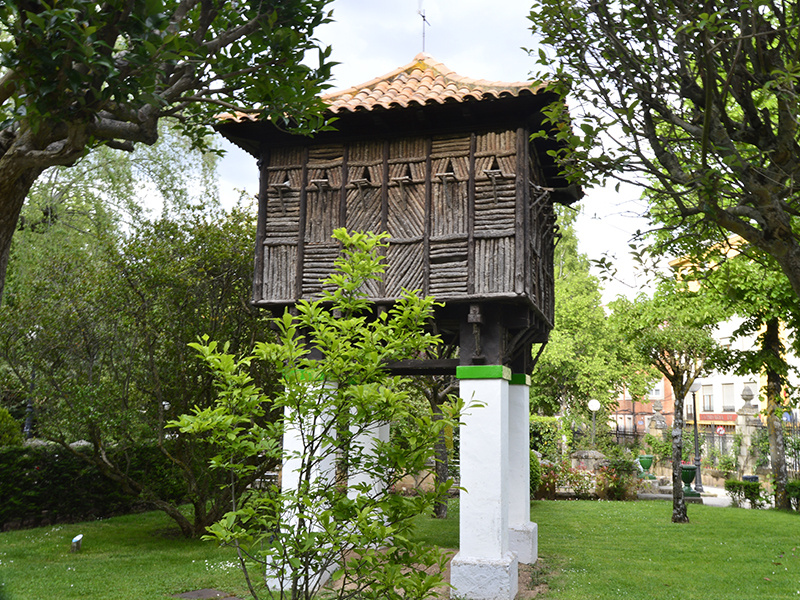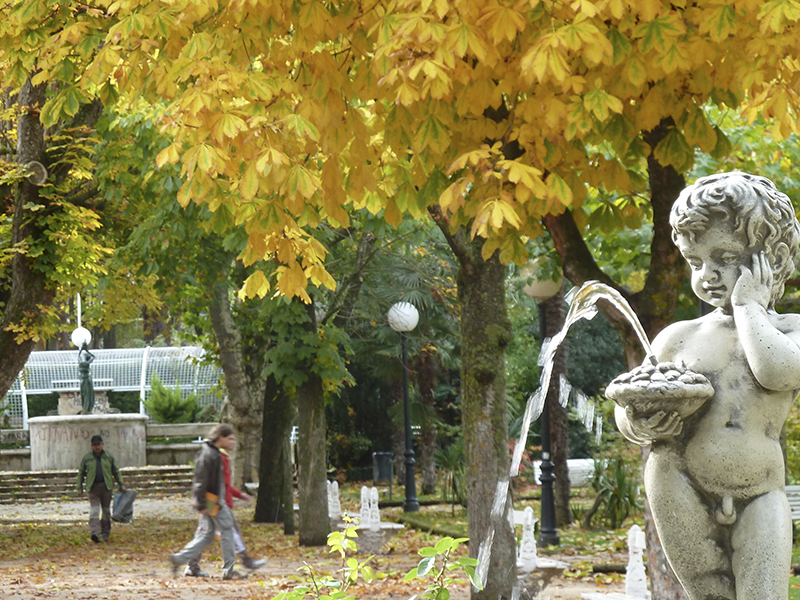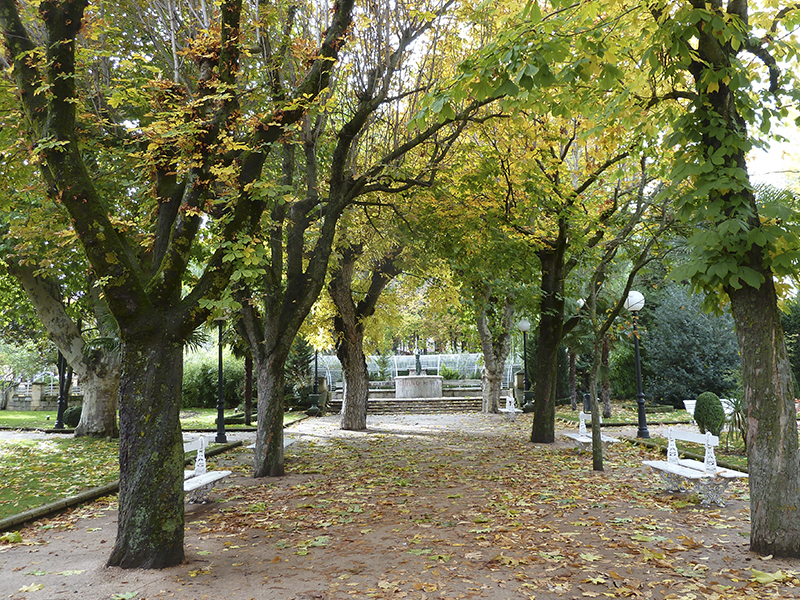
Walks, fountains and other places
WHERE TO GO
The park is divided in several walks and roundabouts that lead to the passerby to the different points of interest.
In the lower part we find:
• Walk of the Hermitage of the Soledad, that concludes in said temple and is scene in the good time of popular games like the tanguilla, bowls ....
• Walk of Cardinal Pimentel, cardinal who promoted the construction of the bell tower of the Concatedral de San Pedro.
• Fray Conrado Muíños, an Augustinian friar born in Almarza (Soria) in the middle of the 19th century, author of several works on the History of Soria.
• Walk of Lope de Morales, Soriano of Las Cuevas de Soria who in the seventeenth century was oidor and prosecutor of the Chancery of Valladolid.
Between the two previous walks we draw a series of garden areas with roundabouts, classic gardens, benches and interesting woodlands. Their names make reference to personalities of the world of the arts, soriano or related to Soria such as Fray Luis de Leon, Antonio Machado, Gerardo Diego, Gustavo Adolfo Bécquer ...
Presiding over these gardens is the Fuente de Los Tres Caños, guarded by a loft shaped like a hórreo and two smaller and ornamental, the Fountain of the Child and the Fountain of the Lady. In addition, it highlights a bust of Mariano Granados of the early twentieth century in gratitude of the city to this journalist and Galician writer.
In the upper part of the park we find the following walks:
• Walk of Maximino Peña, Soriano painter of Salduero, very famous and known around the world in the late nineteenth and first half of the twentieth, whose realistic painting is quoted upwards.
• Paseo del Cid Campeador, the first Lord of Soria
• Paseo de San Fernando, because in this part of the park was where every May 30, San Fernando festivity, in the fifties and sixties the military held a military parade with parades, masses and flag swearing in honor of the patron of his Weapon, San Fernando.
• Walk of Fernán González, first Count of Castile who, presumably, could be the promoter of the first Castle of Soria.
• Walk of Alfonso del Castillo, in allusion to King Alfonso VIII of Castile who lived in Soria for some time sheltered by Soriano knights. In thanks to the favors rendered to the crown, King Alfonso granted to the city several privileges. In its memory the sorianos adopted the figure of this monarch in the arms of the city along with the Castle.
After the peculiar Tree of Music, rests the "Monument to the Authors of Sanjuaneras Songs", Francisco García Muñoz and Jesus Hernández de la Iglesia. Their songs are sung during the Festivities of San Juan but the most emotional act is undoubtedly the one realized on Wednesday after the Pregón next to this monument in which the Municipal Band interprets these songs like homage of the city of Soria to these illustrious children of the same. In some of these famous songs it is named the Alameda de Cervantes, a reflection of the affection of all the Sorians to this emblematic garden.
Once we cross the area of the fountains and up to the top of the park is located the nursery reformed and endowed with the necessary equipment and resources for the care and maintenance of a park of the dimensions and characteristics of this one.
Annex to the nursery is the Teaching Hall which welcomes the visits of schools that have always found in the Alameda de Cervantes a perfect setting for learning the natural environment, with its spectacular array of tree species, difficult to gather in the same enclosure .
Leaving behind the nursery, we find "La Rosaleda", which explodes in spring giving these walks a beautiful colorful and pleasant smell showing various species of rose bushes that are the anteroom of the immense and meticulous meadow of the "Alto de la Dehesa" and the Thick pine forest that envelops it.
To conclude, note that the park has two children's play areas equipped with swings for children in addition to a merry-go-round that is located in the summer months in the gardens of the area of fountains and establishments with restaurant and bar service. It should be noted that the first children's area that was installed was financed by the production company of the film Doctor Zhivago, Metro Goldwyn Mayer, as a thank you to the city for the welcome offered during their stay to shoot the film.











